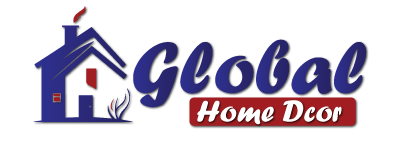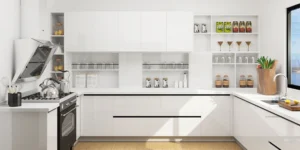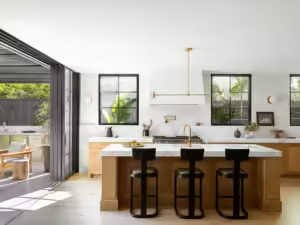The Importance of a Well-Designed Meeting Room for Productive Workspaces?

In today’s fast-paced business environment, a meeting room is more than just a space to gather employees or clients. It serves as the hub of collaboration, innovation, and decision-making. A well-designed meeting room is vital to any workspace, impacting productivity, creativity, and the overall company culture. In this article, we will explore the significance of meeting rooms, how to design them effectively, and their role in ensuring productive outcomes.
What Is a Meeting Room, and Why Does It Matter?
A meeting room is a designated space within an office or other professional environment where teams brainstorm, strategize, and align on goals. Whether it’s a formal boardroom for high-level discussions or a casual space for team huddles, a meeting room provides a structured environment for focused communication.
Meeting rooms matter because they create opportunities for collaboration in an increasingly remote and hybrid work culture. They act as a bridge, connecting employees with different roles, departments, or even time zones. A dedicated, functional meeting room conveys professionalism and helps businesses make a strong impression on clients and partners.
Key Features of an Effective Meeting Room
Creating an effective meeting room requires attention to several design elements and functional features. Here are some essential aspects to consider:
- Space and Layout
The size and layout of the meeting room should accommodate the number of participants while ensuring comfort and mobility. A cramped or cluttered room can stifle creativity and focus, while a spacious and well-organized room promotes ease of communication.
- For smaller teams, a compact room with minimal furniture can work well.
- Consider a conference-style layout with a central table for larger teams or formal board meetings.
- Technology Integration
Modern meeting rooms must be equipped with the right technology to facilitate communication. In a globalized workplace, video conferencing tools and high-speed Internet are crucial. Some key tech features include:
- Large screens or projectors for presentations.
- Video conferencing systems like Zoom or Microsoft Teams.
- Whiteboards or smart boards for brainstorming and notes.
- Wireless charging ports and power outlets for laptops and devices.
These tools ensure seamless collaboration, whether participants are physically present or joining remotely.
- Acoustics and Lighting
Poor acoustics can disrupt communication, making it easier for participants to focus. Investing in soundproofing materials and good-quality microphones can make a big difference. Similarly, lighting plays a crucial role in setting the mood. Natural light is ideal, but if that’s not possible, opt for adjustable LED lighting to suit different types of meetings.
- Furniture and Ergonomics
Comfortable chairs and tables are essential for any meeting room. Ergonomic seating can prevent fatigue during long sessions, ensuring participants remain engaged. Furniture should also be adaptable—modular tables and chairs can be rearranged to suit different meeting formats.
- Aesthetics and Ambiance
The design of the meeting room should align with your company’s brand and culture. Minimalist designs with neutral tones work well in most professional settings, but you can also add elements like plants, artwork, or inspirational quotes to create a welcoming atmosphere.
Types of Meeting Rooms and Their Functions
Not all meeting rooms are the same. Different types serve unique purposes, and having a variety of rooms can cater to diverse needs. Here are some common types:
- Boardrooms
These large, formal meeting rooms are designed for executive discussions, strategic planning, and client presentations. They typically have a long conference table, high-end technology, and luxurious seating.
- Huddle Rooms
Huddle rooms are smaller, casual spaces for quick discussions or impromptu brainstorming sessions. They are ideal for teams of 2–6 people and usually feature a small table, a whiteboard, and minimal tech.
- Training Rooms
Training rooms are designed for workshops, seminars, and employee onboarding sessions. These meeting rooms are often larger and feature a flexible seating arrangement to accommodate group activities.
- Virtual Meeting Rooms
With the rise of remote work, virtual meeting rooms have become increasingly popular. These are online spaces where teams can collaborate using video conferencing tools. However, physical rooms can be optimized for virtual meetings by including the right audiovisual technology.
Tips for Using a Meeting Room Effectively
Even the best-designed meeting room can fall short if not used effectively. Here are some tips to make the most out of your meeting space:
- Set a Clear Agenda
Before using the meeting room, ensure an agenda is shared with all participants. This helps everyone stay focused and ensures that the meeting stays on track.
- Book in Advance
To avoid scheduling conflicts, use a booking system for your meeting rooms. Many companies use online tools to manage room reservations and availability.
- Limit Attendees
Only invite participants who are essential to the discussion. Overcrowding a meeting room can lead to distractions and wasted time.
- Encourage Participation
Use collaborative tools like whiteboards or sticky notes to engage participants and make everyone feel involved.
- Conclude with Action Items
At the end of the meeting, summarize key takeaways and assign action items. This ensures that the meeting translates into actionable results.
The Role of Meeting Rooms in Remote and Hybrid Workplaces
As remote and hybrid work models continue to grow, the purpose of meeting rooms has evolved. They are no longer just physical spaces but integrated with digital tools to bridge the gap between in-office and remote employees.
- Hybrid Collaboration
Hybrid meeting rooms have advanced video conferencing systems that allow remote and in-person participants to interact seamlessly. High-quality cameras, microphones, and collaboration software are essential for these setups.
- Fostering Team Connection
In a remote-first world, meeting rooms provide opportunities for face-to-face interaction, strengthening team relationships and fostering a sense of belonging.
- Flexibility
Some companies have adopted flexible meeting spaces that can be reconfigured for different purposes, such as virtual town halls or hybrid brainstorming sessions.
Conclusion
A well-designed and thoughtfully equipped meeting room is a cornerstone of any productive workspace. It is vital in fostering collaboration, creativity, and effective communication among team members. From boardrooms for strategic discussions to casual huddle rooms for brainstorming, meeting rooms come in various forms to suit different needs.
As workplaces continue to evolve, so will the purpose and design of meeting rooms. By prioritizing functionality, technology, and comfort, businesses can ensure that their meeting spaces remain relevant and effective in facilitating teamwork and innovation. A great meeting room is an investment in productivity and success, whether physical or virtual.



